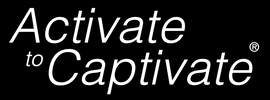|
Every presentation is a conversation. Even though the audience isn’t speaking, they are still responding to the speaker’s content. There is a back-and-forth between the two parties. However, the more a talk sounds like a “presentation”, the easier it becomes for the audience to tune out. There is a subconscious distancing that can occur which makes it more difficult for the speaker to effectively communicate their message. That’s why I advise avoiding sentences that bring attention to the presentation such as:
1. In this presentation I’ll be talking about… You wouldn’t start talking to a colleague by opening with, “In this conversation I’ll be sharing…” so I wouldn’t open a talk by saying, “In this presentation I’ll be talking about…”. Instead, just share the information without that formal set up. Think of how you’d start talking about this topic in a conversation and open that way instead. 2. I’ll go into that more in a few slides… When people use this phrase, it minimizes the importance of the slide you’re actively sharing. The audience starts to think about what slides will be shown in the future, when that information will come up, and what that info will be. The audience’s attention jumps into the future and they might miss the details you’re currently talking about. If you share the information as you get to it, the audience is always paying attention to what is currently in front of them. 3. This slide shows you… In conversations, images are used to reinforce ideas. They are helpful because pictures add context and specificity to a story. However, you wouldn’t share a photo and say, “This photo shows you…”. Instead, you’d share a bit of background and then show the image to add in more depth to your point. By eliminating that phrase, the slide becomes helpful for adding in details instead of something you are having to explain to the audience. Great speakers want their audience to feel that their participation is necessary and appreciated. Therefore, if you wouldn’t use the phrase in a conversation, I wouldn’t use it in a presentation either. This way, your speech is approachable and your audience can feel more actively involved and connected to your content. Author: Bri McWhorter |
AuthorBri McWhorter is the Founder and CEO of Activate to Captivate. Categories
All
Videos
Archives
June 2024
|
Click to Contact
© 2014-2024 Activate to Captivate, LLC
All Rights Reserved
All Rights Reserved


 RSS Feed
RSS Feed
